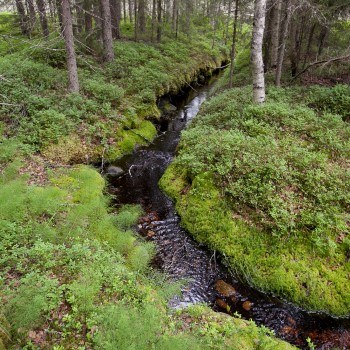DESTRESS (DisEntangling the impacts of multiple Stressors on stream ecosystems)

Running water ecosystems are key providers of ecosystem services, but are often heavily impacted by multiple stressors, such as elevated organic and inorganic pollution, hydromorphological modification, sedimentation, and invasive species. Presently, the scientific understanding of these interactions and their impacts is very limited. As a result, management of multiple stressors in running waters is often ineffective, fixing only part of the problem, or targeting the wrong stressor completely. DESTRESS is a cross-disciplinary project which tackles the multiple stressor problem by integrating novel experiments and intensive analysis of existing data within an explicit socio-economic context. DESTRESS will develop methods for detecting and diagnosing impacts, investigate mechanisms underlying multiple-stressor impacts, and develop decision support tools, including models for cost-effective management of multiple stressors in relation to environmental goals and ecosystem services.
DESTRESS is a cross disciplinary project that will (a) apply a species trait-based framework to help detect and diagnose impacts of multiple stressors on stream biota and ecosystem functioning, and on ecological status as defined by the Water Framework Directive; (b) investigate mechanisms underlying multiple-stressor impacts on ecosystem level properties, including functional stability; (c) Evaluate key indicators of ecological resilience; and (d) develop realistic decision support tools, including models for cost-effective management of multiple stressors in relation to environmental goals and ecosystem services.
The economic part of the will develop models for cost effective management at different jurisdictional scales, encompassing multiple remedial measures targeting different stressors, stream systems, and Swedish environmental goals (water quality, biodiversity etc). Key steps include:
- Obtain costs and effects of possible remedial measures on ecosystem status, functioning and service delivery from the existing model, and from DESTRESS. Describe costs and effects initially at the level of the land management unit
- Assess three classes of management actions: abatement at source, reduction in transport from source to recipient (eg. by land use measures), and restoration in situ, and explore wider environmental consequences of different measures in each class, and interactions among them
- Develop an existing optimization model for cost-effective combinations of measures, accounting for multiple stressor interactions, and uncertainty in the effects of measures, including on ecosystem resilience
- Address upstream-downstream connectivity in catchments within the hierarchical Swedish governance context, cost effective solutions are explored for different local/regional environmental policies, and at sub-catchment, municipal, and county levels. Different means of obtaining perceived fair allocations are investigated, eg. charge-refund or nutrient trading systems
Kontaktinformation
Ing-Marie Gren, professor
Institutionen för ekonomi, SLU
ing-marie.gren@slu.se, 018-67 17 53